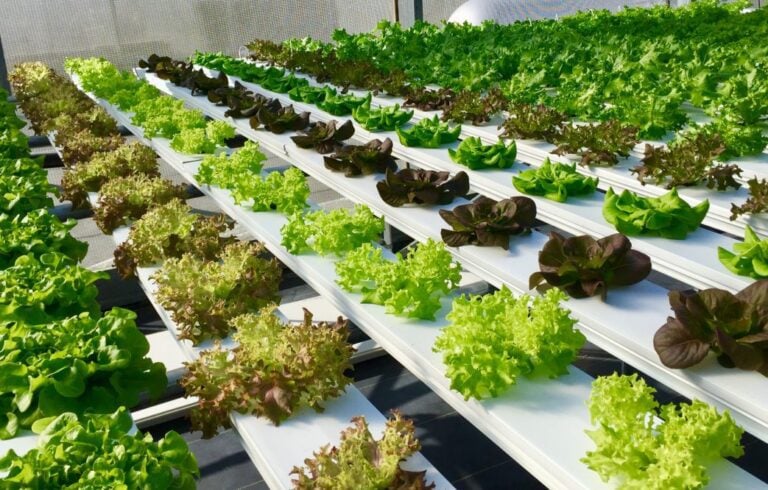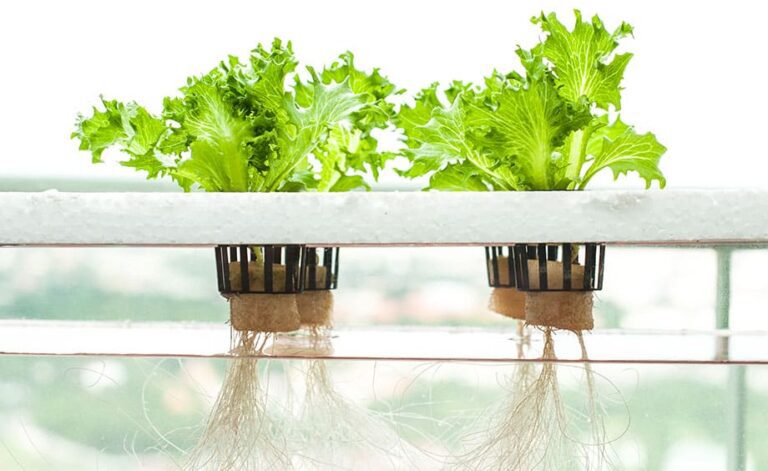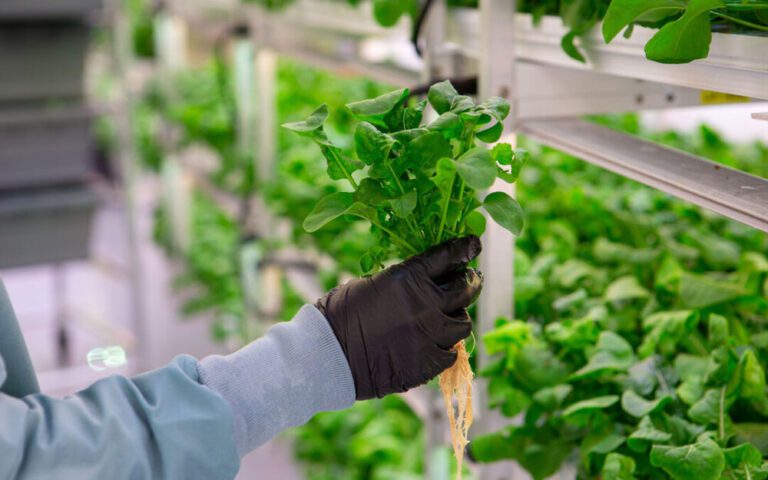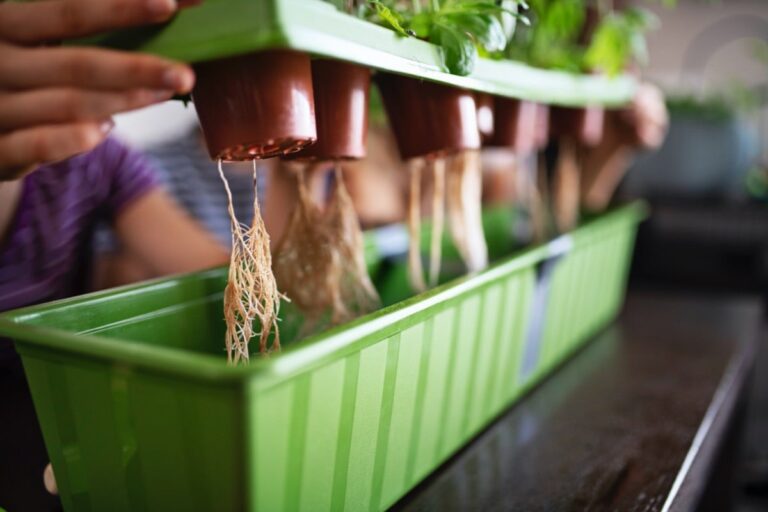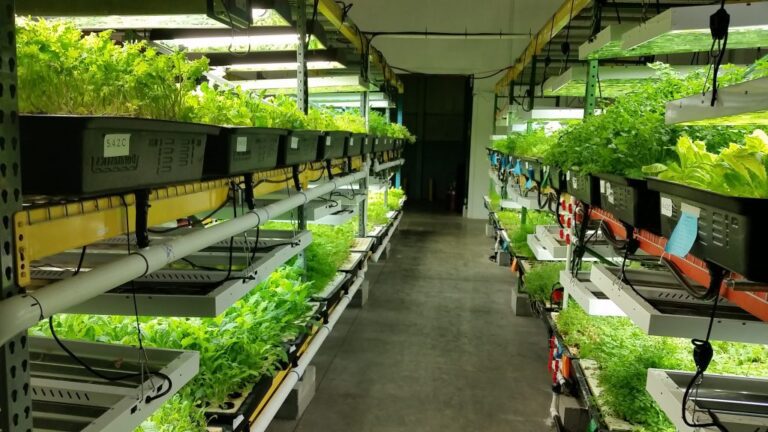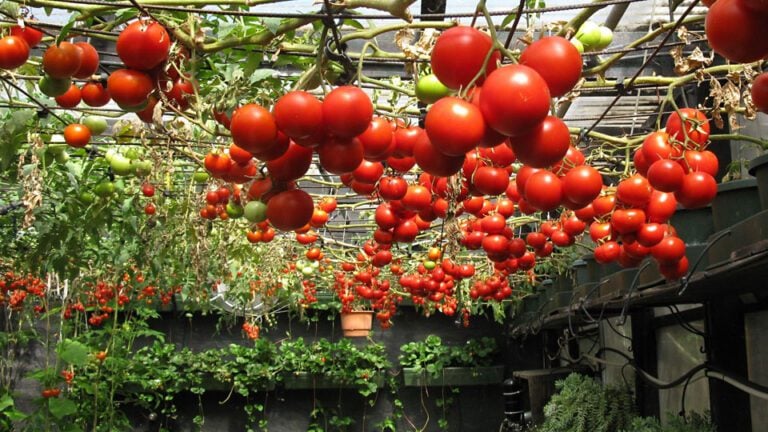The Best Hydroponics Lights for Indoor Hydroculture
Hydroponics Definition:
Hydroponics is an increasingly standard method of growing plants that uses a nutrient-rich mix with a water base. This means that soil or dirt isn’t used in a hydroponics method. Instead, the plant roots are maintained by substances such as Rockwool, peat moss, clay pellets, and perlite.
Hydroponics is an efficient method for growing plants by placing plants in a nutrient-rich water mixture. Instead of using soil or earth to grow the plants, the plant roots come into direct contact with the nutrient-rich blend. The plants also have access to a considerable amount of oxygen, which helps to assist growth. The primary benefit of using hydroponics to produce plants is that it makes for a much quicker growth rate.
Types of Grow Lights in the Market:
There are six main kinds of grow lights on the market at present, which include:
1. LED Grow Lights:
LED Hydroponic grow lights are the most efficient, least costly, and most popular type of hydroponic light obtainable. LED bulbs last longer and use less energy than other bulbs, so they are an excellent choice for hydroponic plants. They also generate less heat, making them harmless to plants. LED grow lights are also useful for heavy duty. These specially-made grow lights increase the yield of crops a couple of times better than direct sunlight.
2. Incandescent Grow Lights:
These are the most expensive and least efficient hydroponic lights accessible in the market. They generate a significant amount of heat, which can be hazardous and might damage the plants. For these reasons, incandescent growing lights are not suggested for healthy hydroponic plant growth.
3. Fluorescent Grow Lights:
They are more efficient than incandescent lights and are less costly to operate. They also generate lesser heat, making them more securer for plants. However, these grow lights produce less light than other lights, so they might not be adequate for all hydroponic plants.
4. Halogen light:
The light range of a halogen grow light is similar to direct sunlight. Halogen grow lights are less costly than other grow lights and emit incredibly little heat. However, they are not as effective as fluorescent grow lights or LEDs and may not be ample for all hydroponic plants.
5. HPS or High-pressure sodium light:
These grow light bulbs emit a reddish-orange light that is ample, especially for flowering plants. HPS grow lights are more effective than halogen grow lights and produce less heat. However, they are pricier to operate and may not be suitable for all plants.
6. Metal Halide (MH) light:
Metal Halide grow light bulbs produce a bluish-white tinge that is advantageous for vegetative growth. MH grow lights are more effective than halogen grow lights and produce less heat. However, they are more costly and might not suit all plants.
Which Grow light is suitable for Your Plants?
The kind of hydroponic lights you select depends on the plants you produce and their growth stage.
For vegetative growth, LED or fluorescent grow lights are suggested. For flowering plants, MH or HPS grow lights are endorsed.
When choosing a specific grow light, consider the amount of light and the cost of operation emitted by the hydroponic grow light bulb.
LED grow lights are easily the least expensive and most effective option, but fluorescent and incandescent grow lights might be more suitable for specific plants.
The grow light you pick will depend on the particular needs of your plants.
How to Choose a Correct Grow Light?
When choosing hydroponic grow lights for your plants, it is vital to consider the particular needs of your plants.
Some aspects you have to want to consider include the following:
- The type and size of plant you are growing:
The type and size of plant you are growing will decide the type and size of hydroponic light you require for your plants. Make sure you select the right light for the plants you grow.
- The amount of space you have to grow the plants:
If you are growing a tiny plant in a limited area, an LED grow light may be adequate. If you are growing multiple plants or a large plant, you may need a fluorescent grow light.
- The growth stage the plant is in:
It is also imperative to consider your plant’s growth stage. Seedlings and new plants need less light than developed ones. So you might choose a hydroponic light with a lower light intensity. Seedlings need a special kind of light than flowering and vegetative plants.
- The amount, intensity and spectrum of light the plant needs:
If you want your plants to be as healthy and big as possible, you must ensure they are getting adequate light. Grow lights can assist with this, but only if positioned to allow them to reach the plants. The amount of light a plant requires will also define how much space you have for the plant to grow. If you don’t have a lot of room, you might need to get a smaller light or a hydroponic that emits a shorter wavelength.
Essential Parts of Hydroponics:
Hydroponic systems can be either passive or active. Active means nutrient mixtures will be moved around, usually by a drain or a pump. Passive relies on the anchor or a wick of the growing method. Hydroponic systems are also categorized as recovery or non-recovery. Recovery refers to the method by which the nutrient solution will be recycled into the system. While with non-recovery, the nutrient mixture is applied to the growing plants and then vanishes.
There are six primary types of hydroponic systems. The plant roots only need three things, oxygen, water or moisture, and nutrients.
So, what differs between the six methods is the system’s technique to deliver these three vital things to the plant roots. Of course, there are many variants with various names, but they all simmer down to these six core types of Hydroponic systems.
Types of hydroponic systems:
We will discuss six main types of hydroponic systems in this article.
1. Wick System
The wick system is the simplest type of hydroponic method that you can use to develop plants, which means that practically anyone can utilize it. You won’t need extensive knowledge or skills to make it work properly. The wick system is noted for not using electricity, aerators, or pumps. Moreover, it’s the only hydroponic system that doesn’t require electricity. Most wick systems include placing the plants directly within a porous substance like vermiculite or perlite. Nylon wicks are arranged around the plants before they are sent into the nutrient mix.
If you’re contemplating using a wick hydroponic system to grow your plants, you need to know that the simple nature of this system indicates that the plants cannot obtain a substantial amount of nutrients. As such, the system is idyllic for herbs and small and garden plants. Plants that don’t require ample water will produce well in this specific system.
Although this system is fantastic for smaller plants, you’ll have to avoid growing plants like tomatoes and peppers. They are considered heavy-feeding plants, requiring more nutrients than the wick system can deliver.
Another negative feature of this growing system is that nutrients and water aren’t absorbed evenly, which can lead to the buildup of deadly mineral salts. If you use this system, ensure that you drain any extra nutrients with fresh water every couple of weeks.
2. Water Culture:
A water culture method is another extremely simplistic hydroponic system that positions the plant’s roots directly into the nutrient mixture.
Although the wick system places particular materials between the water and the plants, the water culture system avoids this barrier. The oxygen the plants require to survive is sent into the liquids by an air stone or a diffuser. If you use this system, remember that the plants should be appropriately positioned with net vessels.
The best feature of this system is that the roots are positioned directly into the nutrient mixture, so the plants readily absorb the nutrients. Because of the direct access to oxygen and nutrients, plants grown by the water culture method will develop rapidly. Another benefit of the water culture system is that it’s effortless to create and works well with any plant. Even large plants with extensive foot systems will grow fast with this method.
The only potential problem with the water culture system is the occurrence of root diseases caused by dirty growing situations.
3. Ebb and Flow (Flood and Drain):
The Flood and Drain system is another standard hydroponic system that home gardeners mostly use. With this system, the plants are placed in a large grow bed filled with a medium like perlite or Rockwool. Once the plants are carefully embedded, the grow bed is submerged with a nutrient-rich mixture until the water reaches a couple of inches underneath the growing medium’s top layer, ensuring that the nutrient mix doesn’t flood.
The water pump that overflows the grow bed is prepared with a timer that switches the pump off after a specified time. When this happens, the excess water will be drained from the grow bed and directed back into the pump. This system has been efficient for growing nearly all kinds of plants, including certain root vegetables like radishes and carrots.
However, we suggest you don’t use huge plants with an ebb and flow system. Because of how much area the plants will need, you might be unable to fit enough of the nutrient solution and grow medium into the bed with larger plants. The critical issue with the ebb and flow hydroponic system is that the pump control can fail, which can halt operation until the pump is replaced or fixed.
4. Drip Systems:
A drip system is another easy-to-use hydroponic arrangement that you can quickly tailor for different types of plants, which makes it great for any gardener or farmer who plans to make regular alterations. The nutrient solution utilized with a drip system is propelled into a tube that sends the solution directly to the plant base. At the end of each pipe is a drip emitter that controls the amount of solution to be placed in the plant. You can regulate the flow to meet the requirements of each plant.
5. Nutrient Film Technology – N.F.T.:
The N.F.T. system has a straightforward design but is mainly used because of how well it balances a variety of specific applications. The nutrient mix is placed into a large tank when you use the N.F.T. system. From here, the solution is sent by a pump into sloped canals that allow the extra nutrients to flow back into the tank. When the nutrient solution is pumped into the outlet, it flows down the incline and over the plants’ roots to provide the correct amount of nutrients.
We highly recommend that you use net containers with this type of hydroponic N.F.T. system. In many cases, the N.F.T. system won’t need a growing channel. Since the mediums used with this system are moderately small, we suggest you pair them with plants with lesser roots.
6. Aeroponic Systems:
Aeroponic systems are easy to understand but somewhat challenging to construct. With this kind of system, the plants you want to grow will be hung in the air. A couple of vapor nozzles are placed below the plants. These nozzles spray the nutrient mix onto the roots of the plants, which has been recognized as a very effective and efficient hydroponic method. The mist nozzles are directly connected to the water pump. When the pressure rises in the pump, the mixture is sprayed, with the excess falling into the basin below.
As long as you use the correct measurements for the reservoir, you can produce and cultivate nearly all types of plants by using this aeroponic system. However, the tank needs to be exceptionally deep if you plan to grow larger plants. Otherwise, the mist nozzles might not be able to reach all of the roots. Since plants with such a system are hung in the air, they get all the oxygen required.

